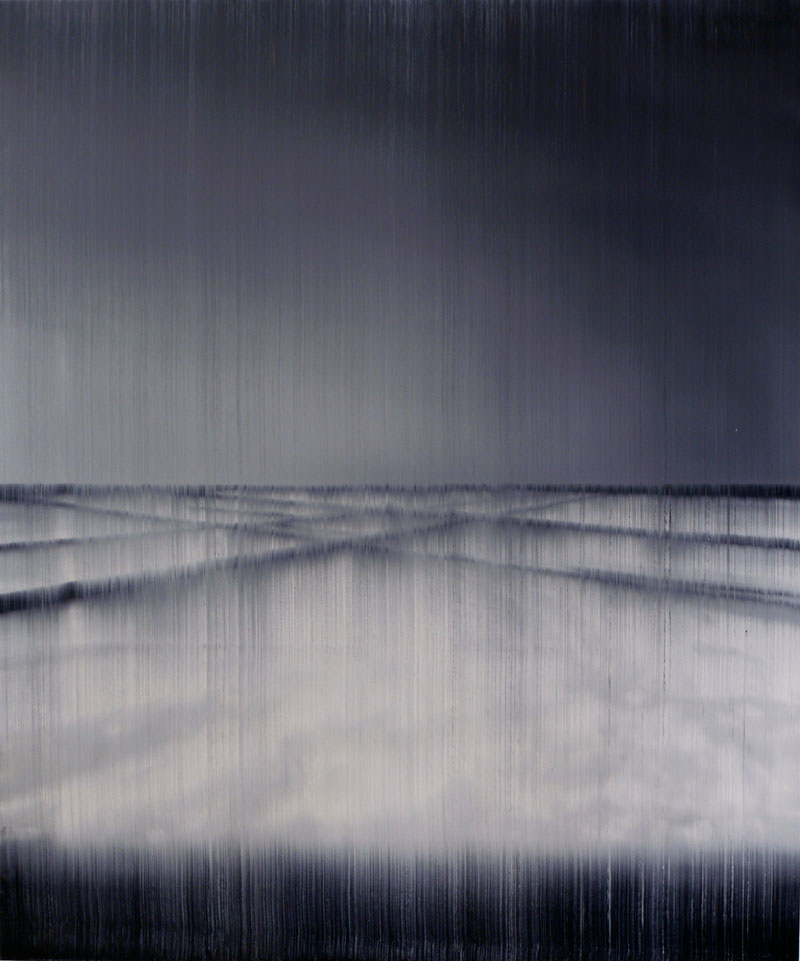Grayscale paintings by Japanese artist Akihito Takuma that are finished by running a 2-meter wide brush down the canvas before the paint has dried. The technique reminds me of the work of Gerhard Richter in which he uses a straight edge to create a blurred effect in his earlier paintings based on newspaper photographs.
Takuma states that his work “treasures that momentary feeling of tension. They depict landscapes featuring cities or horizons, Japanese Yoshino cherry trees, or more abstract things. Landscapes with cities or horizons inspire feelings of order. By running a brush over these, I want to bring depth to that order.”
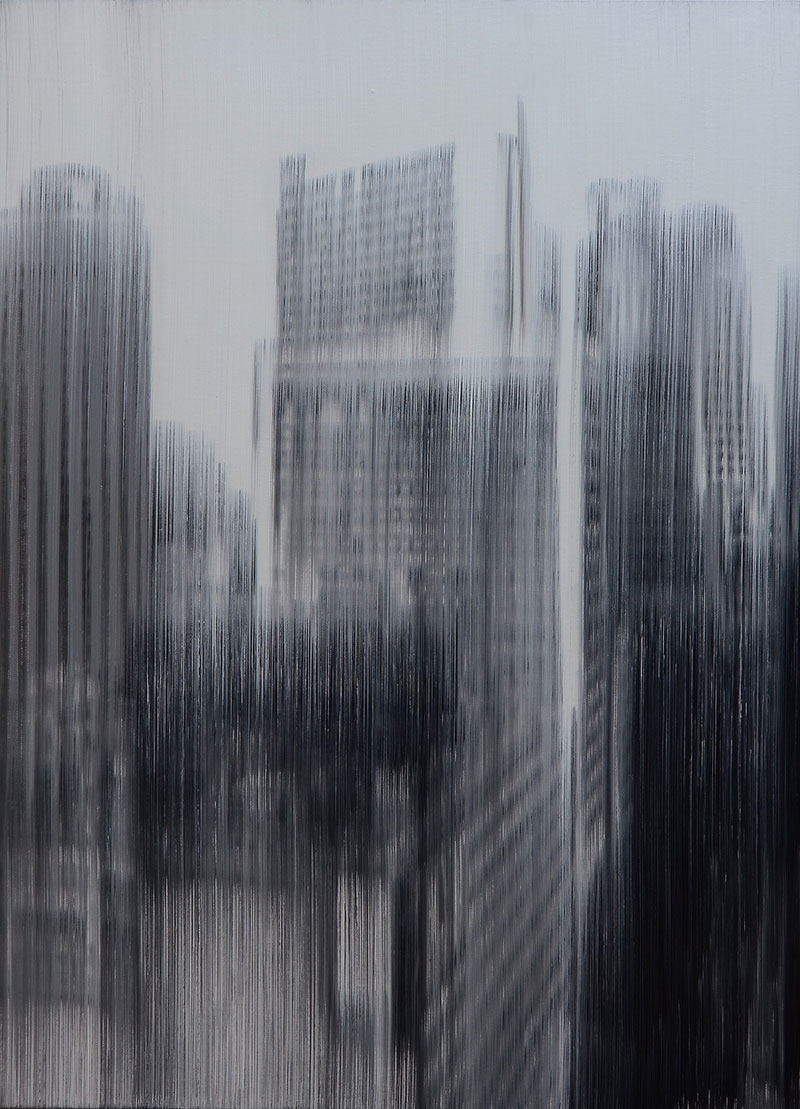
Akihito Takuma (1966) is a Japanese artist who lives and works in Tokyo, Japan. His series of ‘Flight Lines’, the technique of which resembles Gerhard Richter’s echo – fuzzy around shapes and long vertical lines, stems from the observation that the paint in Japan is different in comparison to Europe, because of the high humidity. Ecological differences between the two continents inspired the realization of these paintings.
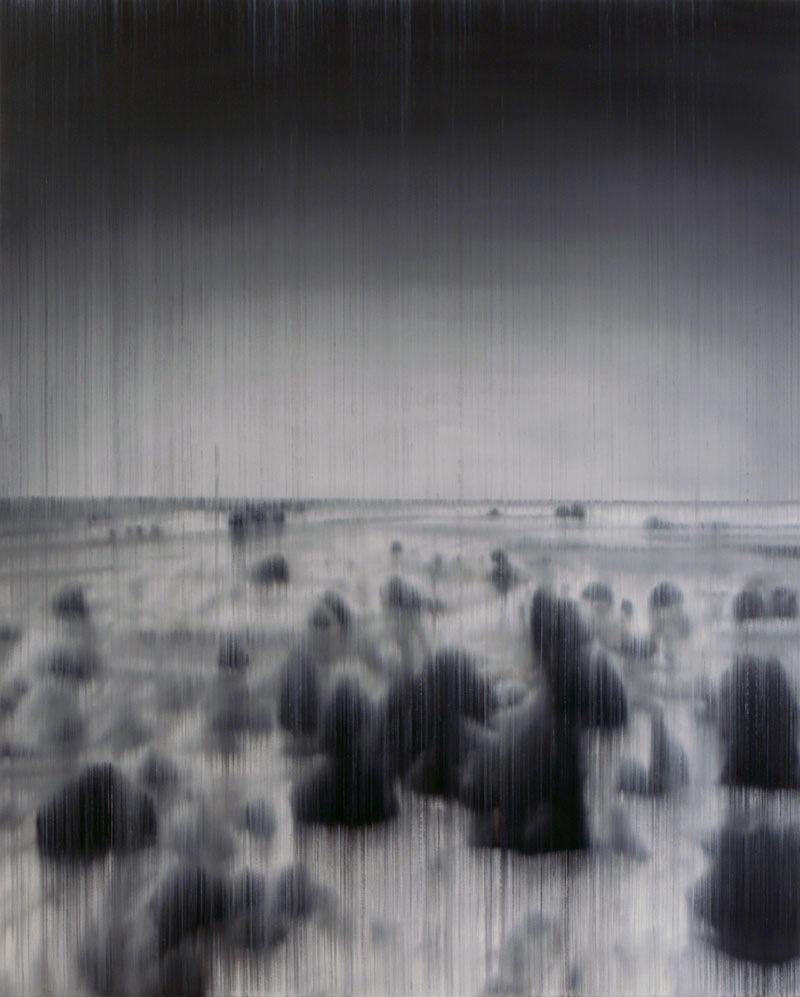
The subjects of the ‘Flight Line’ are landscapes, urban or rural, ‘with a perspective that wants to extend the horizon to infinity.’ They disappear under the veil, and everything becomes indistinguishable, reflecting the will of the artist to study the gap between reality and the description that we make of it.
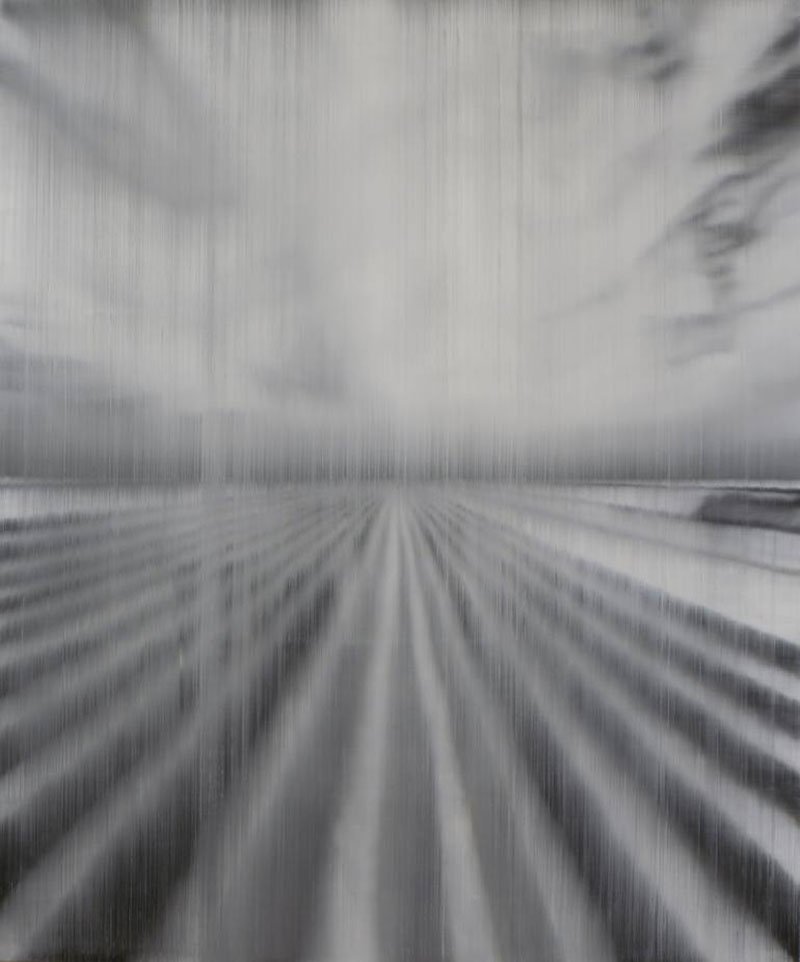
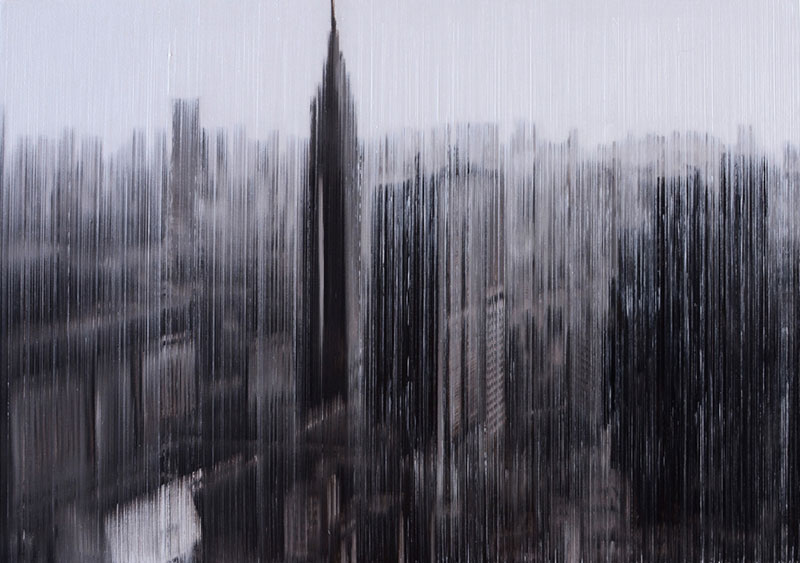
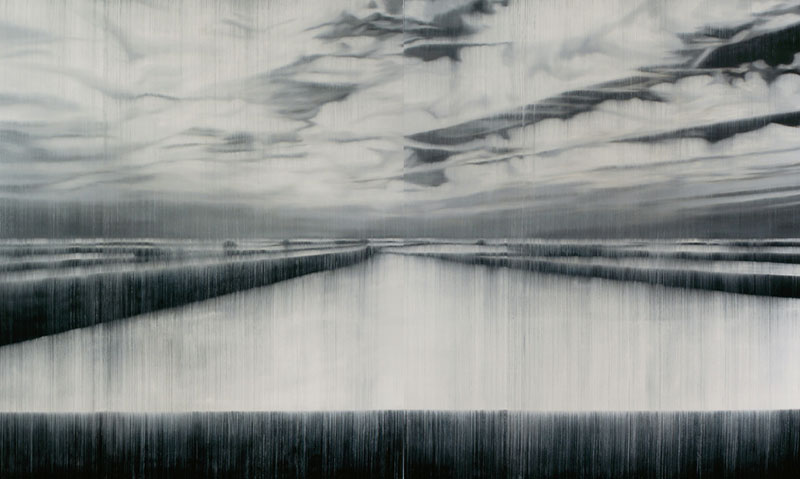
“My works always depict opposing forces—white and black or East and West, vertical and horizontal, surface and interior, dryness and moisture—in one image. I am eager to represent this delicate balance, whether it is seen or not. It might look destructive, but I do value balance. Recently, in the repeated work that I have done up to now, I have come to feel that there is beauty in unmanageable spaces. Right now, there is nothing else that can replace the emotion of the time when the entire image is wrapped up, the huge brush runs over it, and the instant where it cannot be corrected anymore.”






